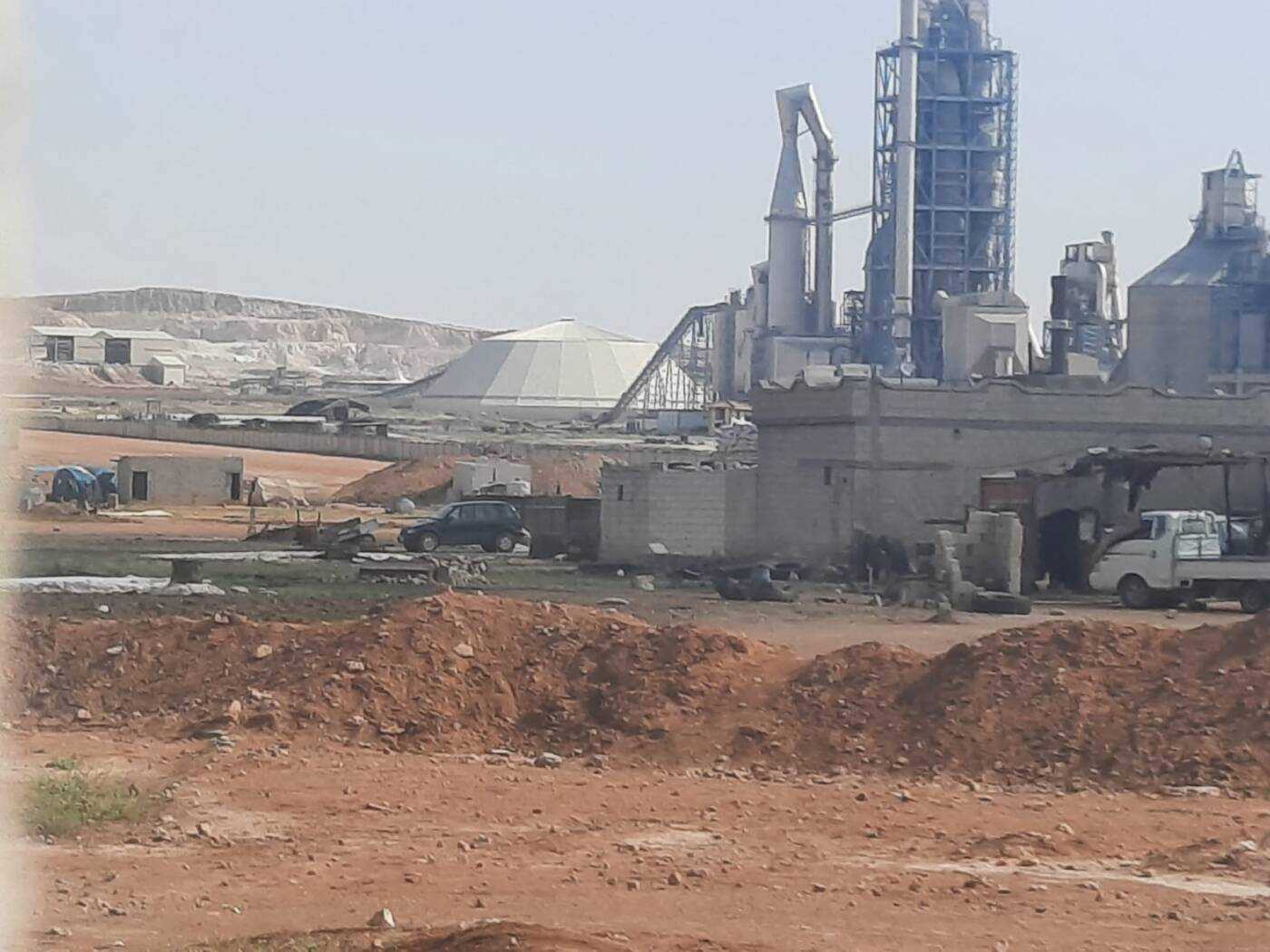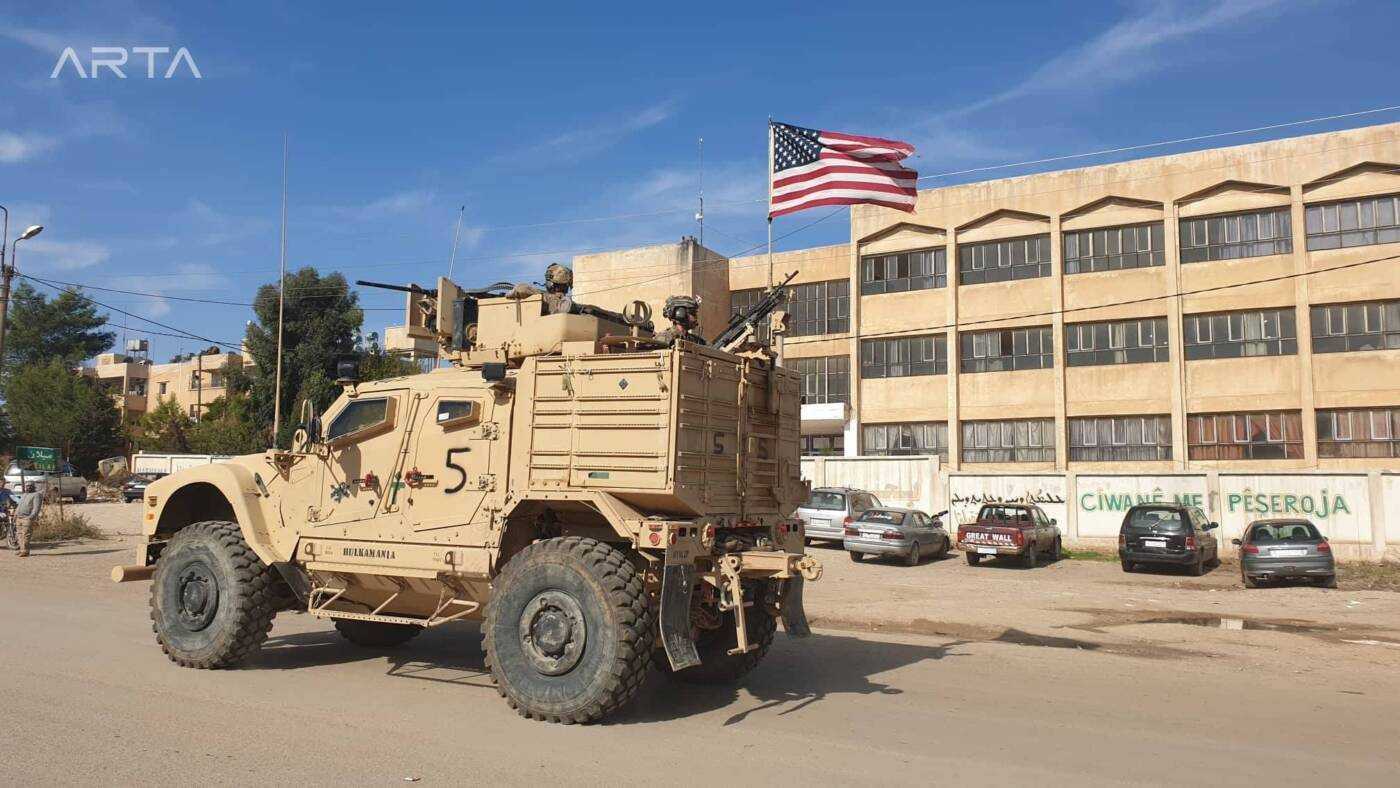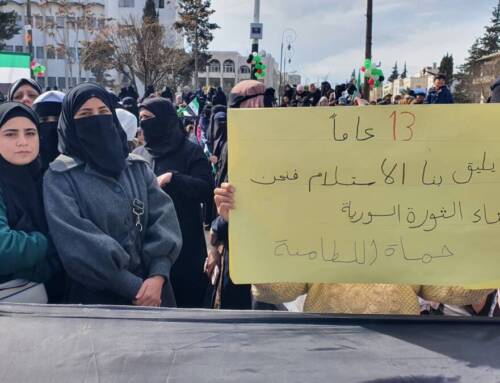Military and civilian sources: US forces redeploy to former positions in northeastern Syria
Military and civilian sources in northern Syria said this month that US forces began to redeploy to multiple points they withdrew from in October 2019. What could that mean, amid reports of an upcoming Turkish offensive?
31 May 2022
PARIS — In a surprising move, United States (US) forces began to redeploy their forces to several points in northeastern Syria in mid-May, local sources told Syria Direct. The apparent step comes as Turkey threatens to launch a military operation in northern Syria to complete a 30-kilometer “safe zone” along its southern border.
Civilian and military sources affiliated with the Syrian Democratic Forces (SDF) said US forces returned to the 17th Division base north of Raqqa and Tabqa airport to the south. US forces are also reportedly preparing for a return to the Kharab Ishk base 43 kilometers southeast of Kobani (Ayn al-Arab) in Aleppo province, located at the former headquarters of French multinational Lafarge.
Kobani is among Turkey’s likely targets in its expected cross-border military operation in northern Syria, alongside Tel Rifaat and Manbij in Aleppo province, Ain Issa in Raqqa province, and Tal Tamar in Hasakah province.
Turkish President Recep Tayyip Erdoğan said on March 23 that Ankara would launch operations against “areas which are centers of attacks to our country and safe zones” inside the Turkish-Syrian border.
Turkey considers the Syrian Kurdish People’s Protection Units (YPG), the main component of the US-backed Syrian Democratic Forces (SDF) in northern Syria, to be an extension of the Turkish Kurdistan Workers’ Party (PKK), listed as a terrorist organization by Turkey and the US.
The redeployment of US forces to Tabqa airport, where Russian forces are present, and the 17th Division may be in anticipation of “the absence of international guarantor forces in the area, allowing for the entry of other parties such as Turkey, Iranian militias, or [Islamic State] IS cells” in the event of a Russian withdrawal from the area, the spokesperson for the SDF-affiliated Northern Democratic Brigade, Mahmoud Habib, told Syria Direct.
Washington has expressed concern over Turkey’s recent threats, warning Ankara against launching any new military operation in northeastern Syria and saying an escalation could endanger the lives of US military personnel in the region. The US has not released any information about redeploying its forces to areas in Syria it pulled out of in 2019.
Habib confirmed reports of the redeployment of US forces, saying the step is “necessary in light of Turkish-Russian rapprochement, which could lead to an exchange of areas of influence in Syrian territory.” Therefore, “US forces are curbing Turkish ambitions,” he said.
At the beginning of May, US military delegations visited the cities of Kobani, Raqqa and Tabqa and held several meetings with SDF military councils, Habib said. The meetings dealt with US policy towards Syria, including redeployment to areas they previously withdrew from, according to Habib.
US forces left their bases in Kharab Ishk, Manbij city, the 17th Division base and Tabqa airport after then-President Donald Trump announced the withdrawal of US forces from Syria in October 2019. However, personnel retained a presence in SDF-controlled Hasakah province and the Deir e-Zor countryside.
Syria Direct attempted to reach the press office of the US-led coalition (CJTF-OIR) by email for comment on reports of the redeployment of US forces in northern Syria, but did not receive a response by the time of publication.
Kobani to the fore
In mid-May, US forces conducted a field visit to the Lafarge company headquarters in Kharab Ishk, southeast of Kobani, which was a US base before the 2019 withdrawal. “After the visit, construction vehicles began repair work,” according to the head of the Kurdish Organization for Human Rights in Syria (DAD), Biradost Kamali, who lives in Kobani.
“The repair work was outside the company’s eastern wall,” Kamali told Syria Direct on May 22, seemingly for the site to be “a military airstrip, not just a military point.” He said “the base has not yet entered into service.”

The Lafarge company in Kharab Ishk, southeast of Kobani, 25/4/2022 (Syria Direct)
Civilian sources from Kobani who Syria Direct spoke to expected a return of US forces to the area to positively impact the area, saying life had deteriorated economically and in terms of security following the US withdrawal and entry of Russian forces.
In Kamali’s view, “life during the US presence was good,” with “people feeling relaxed and going about their business without fear,” in addition to “construction activity and the role of humanitarian organizations at the time.” The entry of Russian forces impacted the area in several ways, especially its economy and security, as “construction movement stopped and the international organizations left,” he said. The area was also targeted by the Turkish army, he added.
After more than two years of “constantly being watchful and on alert,” reports of the US base’s return have been met with “relief, in the hope of the region improving, and putting an end to the repeated Turkish shelling,” according to Kamali.
SDF spokesperson Habib said the latest US moves are implementing promises from the administration of US President Joe Biden, through his officials, to “preserve the SDF, and of support for it in the fight against terrorism.” He said the US redeployment will be partial, but “rights the previous US administration’s mistake, which was to withdraw.”
Despite work to repair the US base in Kharab Ishk, Russian forces have not left the area, said Kamali, contrary to reports of their withdrawal after the invasion of Ukraine. He said Russian forces have not withdrawn from Kobani and its countryside. On May 23, “a joint Russian-Turkish patrol was conducted starting from Gharib village, 15km east of Kobani, to Bandarkhan village in the western Tal Abyad countryside on the Turkish border,” he said.
Power struggle
Earlier this month, the US announced that it would allow some foreign investment in northern Syria without coming under US sanctions via the Caesar Act, with the aim of supporting areas previously controlled by IS, most of which are now held by SDF forces.
On May 11, Under Secretary of State for Political Affairs Victoria Nuland revealed Washington’s intention to issue a general license freeing companies from sanctions restrictions and facilitating private economic investment in areas of northern Syria “liberated” from IS and outside of regime control. The decision includes some areas controlled by the Turkish-backed opposition Syrian National Army (SNA) in the northern Aleppo countryside, as well as SDF-controlled territories.
The decision, and subsequent reports of Washington redeploying its forces in northeastern Syria, indicates that the US aims to strengthen its presence in the area, especially after the Russian invasion of Ukraine, said writer and political analyst Noureddin Omar, who lives in Qamishli. He said the US move comes in the context of “putting pressure on Russia and trying to fill the potential vacuum after the withdrawal of Russian military sectors from Syria to Ukraine.”
While stressing that Washington’s decision and moves to redeploy are to pressure Russia and Iran, the lifting of sanctions on SDF areas aims to “prevent the living conditions in the Autonomous Administration [of North and East Syria (AANES)] areas from being exploited by any party,” he said. That includes “not allowing IS to recruit in the area by exploiting the population’s needs.”
Despite the existence of coordination between the SDF and Russian forces, which entered the region after Turkey’s Peace Spring military operation in October 2019, and continuing political talks between AANES delegations and Moscow, “the SDF are still the main ally of the US,” said Russian researcher Kirill Semenov, an independent analyst and expert at the Moscow-based Russian International Affairs Council (RIAC).
Peace Spring operation ended with a US-Turkish agreement ending the fighting, and a separate Russian-Turkish agreement allowing the deployment of Russian military police and regime border guards along the Syrian border outside of areas Ankara took control of during the operation, to a depth of 30 kilometers. But today, “Moscow won’t be disturbed by any Turkish targeting of SDF forces,” according to Semenov. “It is not in Russia’s interest for its relationship with Turkey to be impacted at the moment.”
In Semenov’s reading, “Moscow will deal with the possible Turkish operation against the SDF with greater understanding than it would have a few months ago, before the start of the military operation in Ukraine.”
Given the “seriousness of Turkish threats to areas of northern and northeastern Syria” on one hand, and the possibility of “Iran and the Syrian regime exploiting any vacuum the Russians could leave in northeastern Syria,” Qamishli-based researcher Omar thinks it likely that “Washington will further strengthen its presence in the coming period.”
Habib agreed, saying Washington would stand in the way of Damascus and Tehran to prevent “any attempt to penetrate the region as a new party,” and to send a message to Ankara “not to change the current lines of contact.”
This report was originally published in Arabic and translated into English by Mateo Nelson.







